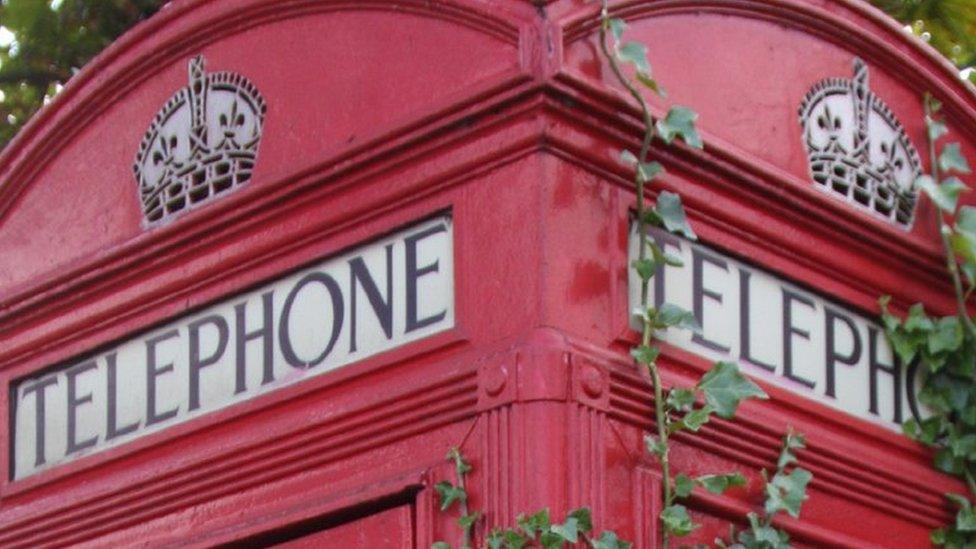Princetown phone box converted into WW1 exhibition
- Published
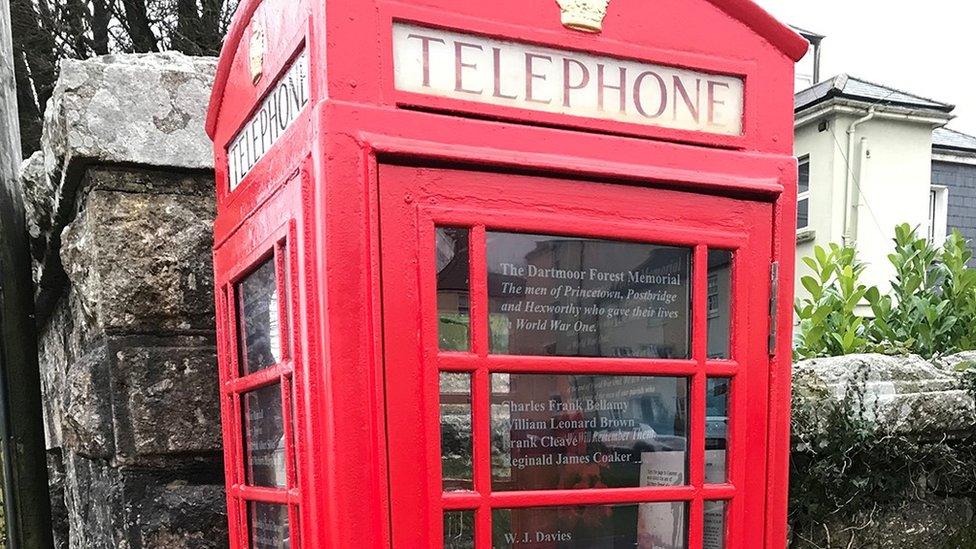
The names of those killed from the village in World War One are etched on the windows of the phone box
A phone box has been transformed into an exhibition space to mark the centenary of the end of World War One.
The "micro-museum" in Princetown, Devon, commemorates the lives of village men killed during the war.
It follows research by Christine Faulkner into the lives of the men whose names are on the village's war memorial.
Residents have fought to save the village's payphones from being decommissioned.
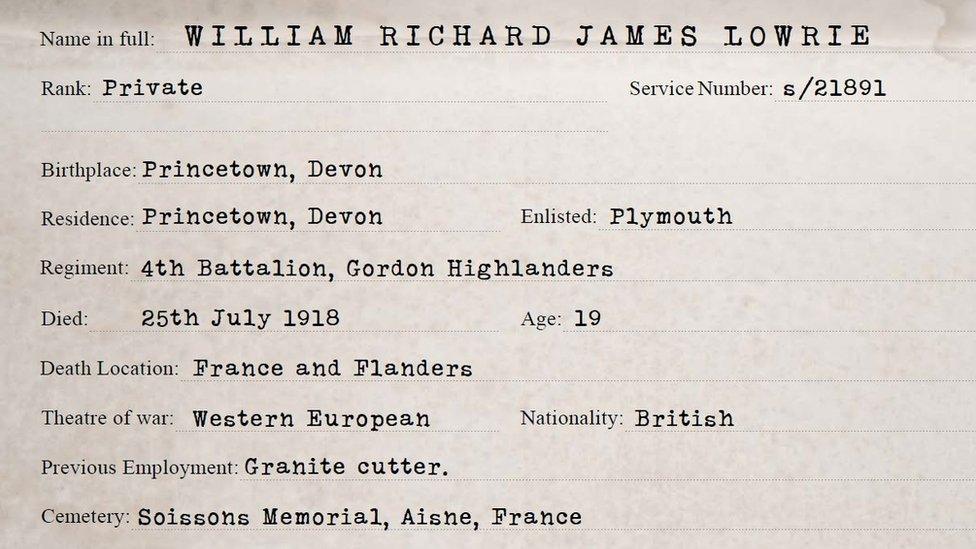
Inside the phone box are "record forms" with details of each man that died
The museum has been developed after Dartmoor Forest Parish Council bought the box from BT earlier this year.
Ms Faulkner said: "I always went to the services at the memorial when I lived in Princetown.
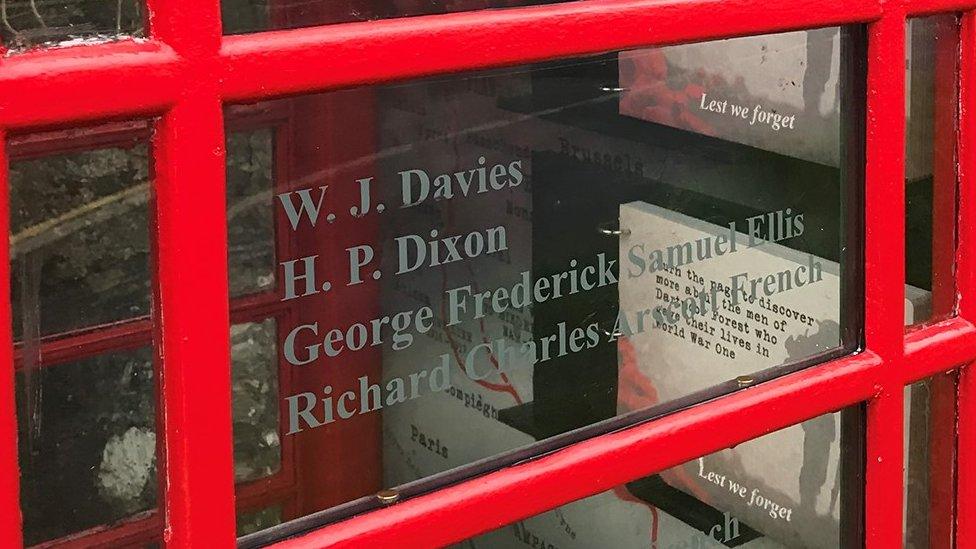
Residents have fought to save the village's payphones from being decommissioned
"It was when the vicar read out the names but could only say their initials that I thought the men who died deserved to be remembered properly, so I started to look up their names and it snowballed from there."Councillor Greg Manning said the village "suffered a loss of 35 men" during the war.
"I don't know exactly what the population was, but it must have been a huge loss," he said.
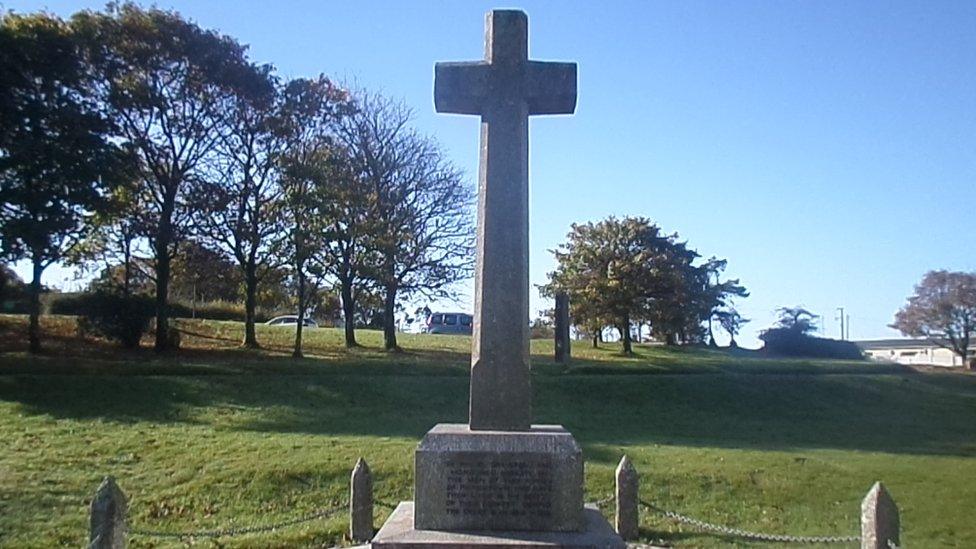
Each man recorded on the Princetown War Memorial features in the phone box
Inside the phone box are two folders containing a "record form" for each man which include - among other things - their rank and when they died.
Their names are also etched on the windows.
Steve Cox, clerk to the council, said: "All of these are evocative and they tell a story to you as an individual and I think that's what makes it more poignant."

Some of the men commemorated in the exhibition:
Percy Wheaton is the youngest person remembered on the Princetown memorial. The trumpeter was 17 when he died in Nord, France, on 10 November 1914.
Louis Moses, a private in the 2nd Battalion, Royal Berkshire Regiment, was one of the 19,240 fatal casualties of the first day of the Battle of the Somme, 1 July 1916. He was 24.
William Leonard Brown was just 14 when he enlisted. He served in Malta before being discharged in April 1914. He was recalled at the start of the First World War and was killed in the Battle of the Somme, aged 26, on 5 September 1916.
James Carter Gibbon died at home in March 1923, more than four years after the end of the war, from injuries sustained on the battlefield in Egypt. He was 49 and is buried in Princetown.

The Armistice 100 years on

Long read: The forgotten female soldier on the forgotten frontline
Video: War footage brought alive in colour
Interactive:, external What would you have done between 1914 and 1918?
Living history: Why 'indecent' Armistice Day parties ended

- Published5 September 2018
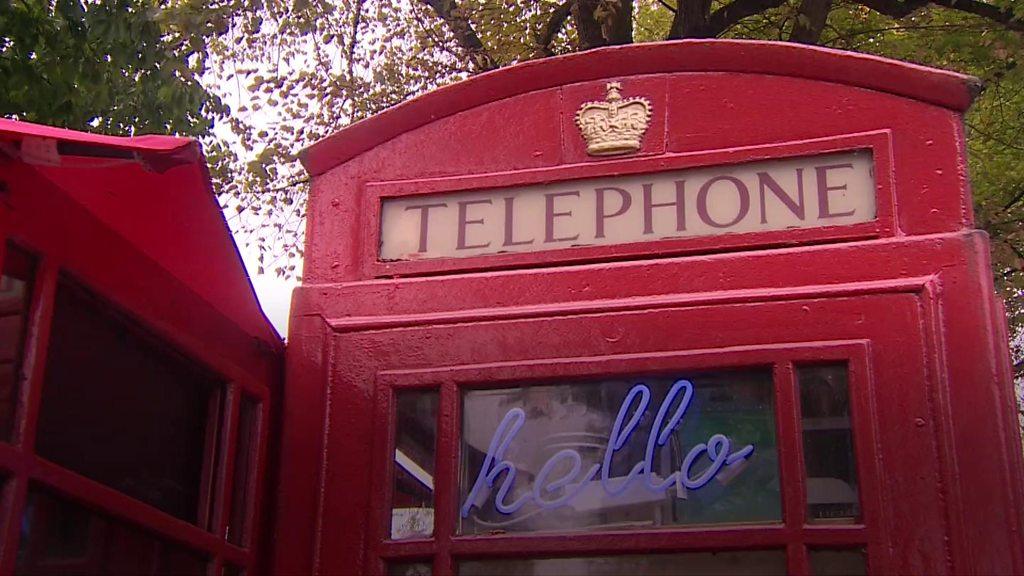
- Published5 June 2018
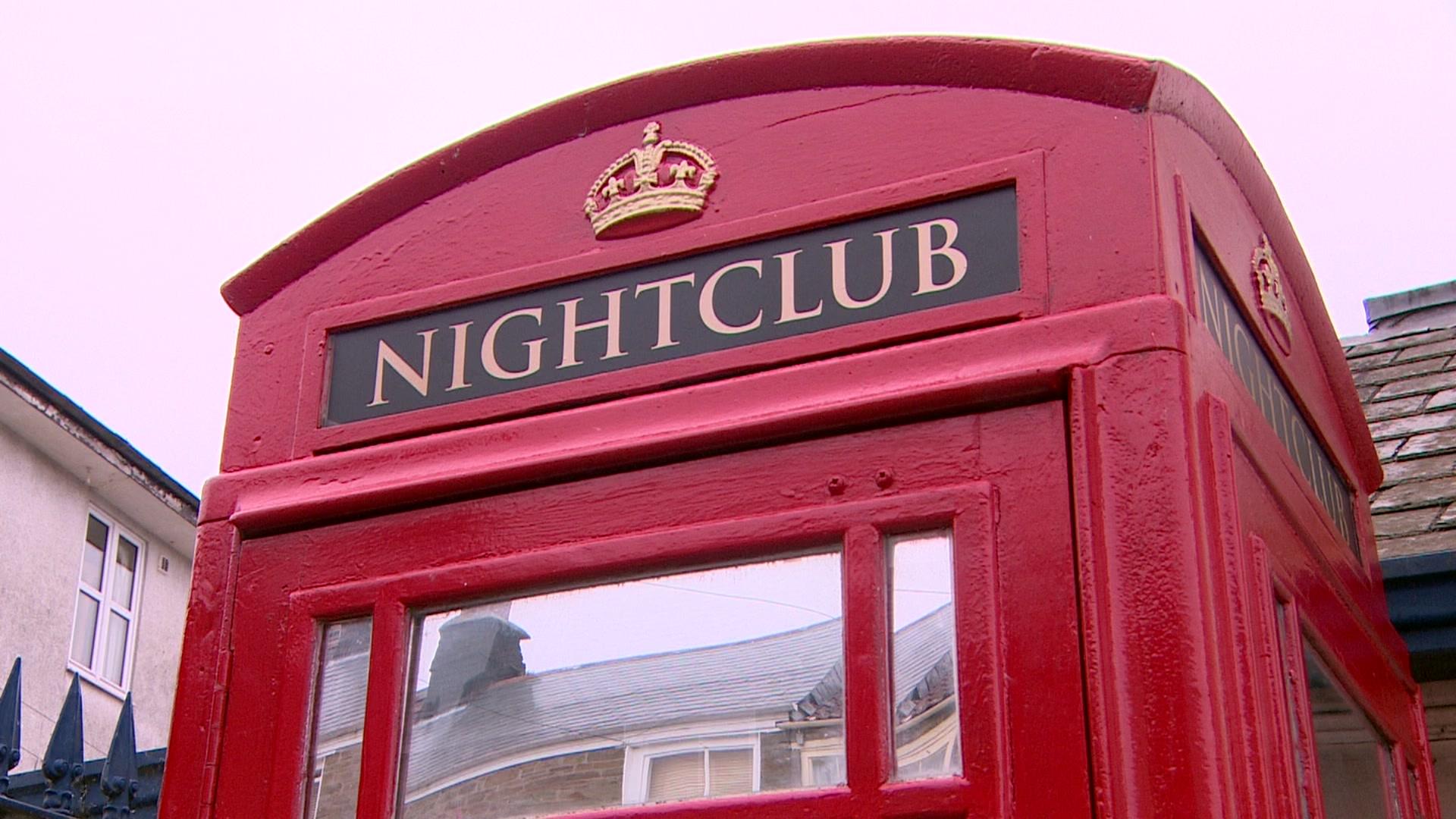
- Published27 October 2017
